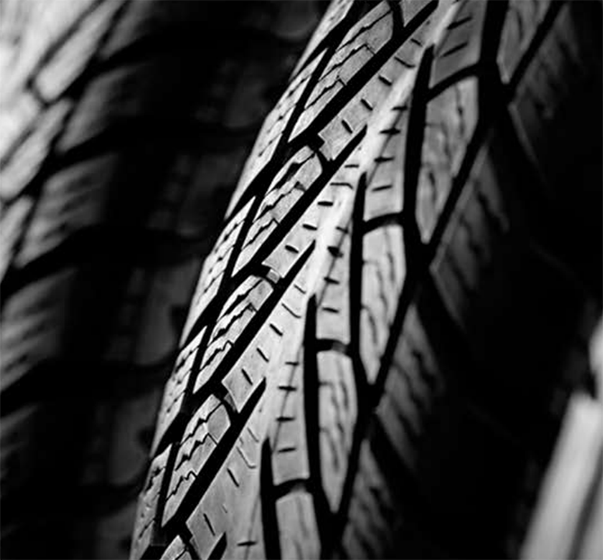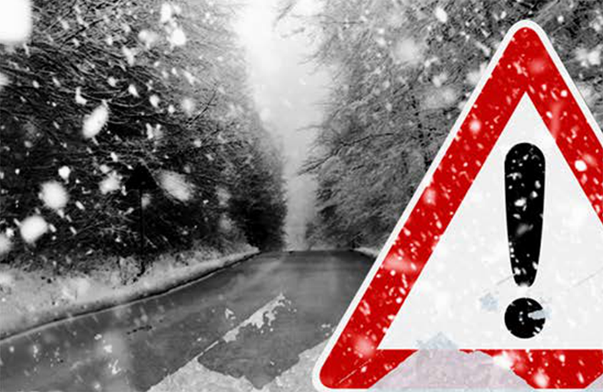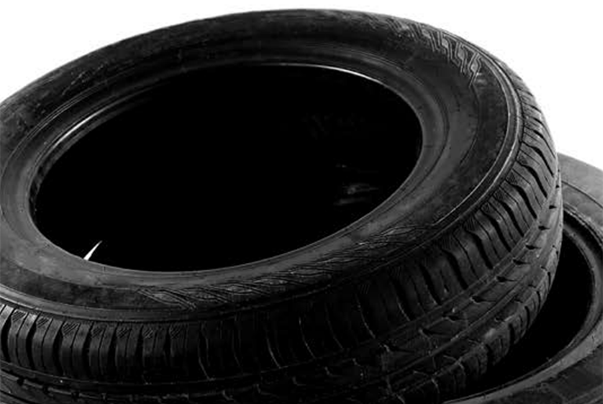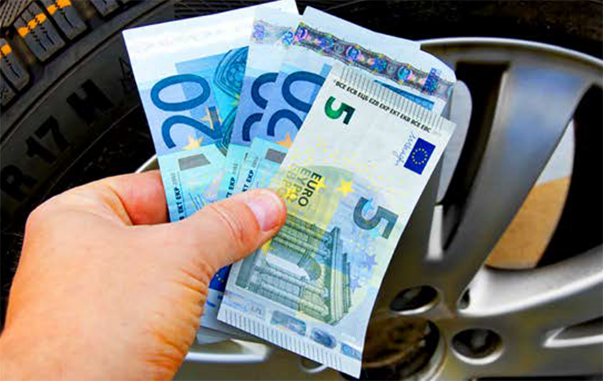The tyre industry is able to fulfil almost every motorist’s wishes: Optimal grip in curves and on dry asphalt, perfect brake friction on wet roads and safe cornering on snow-covered slopes. But unfortunately it is not possible to combine all of these qualities in a single tyre. Therefore, motorists have to decide and select a tyre that best meets their requirements. In this guide, we devote ourselves to learning which tyre is optimal for which requirements and operating conditions, what you should pay attention to when purchasing tyres in general and how to find a tyre that offers a good price/ performance ratio.

Tyres – What You Should Know
New tyres are manufactured according to the latest state of the art in car tyre development. They feature improved security, offer complete thread depth and little tyre noise emission and rolling resistance. The manufacturer subjects all car tyres to a meticulous quality control. And the visual effect of a new tyre is not to be scoffed at either. Tyres are very susceptible to wear because they are permanently in contact with the road. During the first 200 up to 300 km, new tyres should not be fully extended or fully loaded so that the optimum performance is achieved via a roughening of the tread.
Used, older car tyres may have internal damage that is not visible from the outside - the consequences are tyre blowouts. To this end, all it takes is driving over a curb, incorrect tyre storage or an accident. Base and brake plates and an unknown running direction or unknown axle assembly in the previous vehicle can also cause other problems - therefore we recommend the purchase of an inexpensive, new tyre and do not recommend the purchase of used tyres.

The Different Types Of Tyres And Their Respective Properties
Tyres are among the most important wear parts in a vehicle and determine the driving behaviour and safety in all weather conditions. To fully comply with the respective requirements, such as grip, braking performance and mileage, there are different types of tyres, which ensure a good grip.
Summer Tyres: Good Grip At High Temperatures And Humidity
A summer tyre is made of a specially developed rubber compound that remains dimensionally stable even at high temperatures and is not going to turn soft. This also results in the lowest possible wear and low fuel consumption, even at high speeds.
In order to ensure good traction even in wet conditions and to prevent aquaplaning, the tread depth should be checked regularly. The law requires a minimum of 1 millimetre; tyre experts recommend that you change tyres at a tread depth of 2.5 millimetres already, however.
If temperatures drop below freezing, summer tyres lose their positive properties – hence, they then have to be exchanged for winter tyres. In the UK, there is no statutory provision for the use of winter tyres. In case of a thick snow blanket, snow chains may alternatively be used. Thanks to improved tyre tread patterns and rubber compounds, the old 7-degree rule of thumb, according to which winter tyres are better suited at this temperature than summer tyres, has incidentally lost its meaning. Instead, we recommend the use of winter tyres - depending on the weather conditions – no later than November and at least until Easter.

Winter Tyres: Grip In Adverse Weather Conditions
Winter tyres remain pliable even in wintry weather conditions and are resistant to brittleness due to their special rubber compound. Herein, the grip of the tyres as well as the structure is mainly in the foreground. Grooves that have been optimised for the disposal of water thus counteract aquaplaning.
If the tyres show the M + S marking (mud and snow), they also sport even more slats and more biting edges, which open up when accelerating and thus dig into the snow. However, the M + S symbol is not protected by law and is often used by foreign tyre manufacturers on summer tyres. We therefore recommend paying attention to the official winter tyre pictograph when purchasing winter tyres, which takes on the shape of a snowflake with a mountain in the background and can be found at the sidewall of the tyres.

All-Season Tyres: Compromise Between Summer and Winter Tyres
All-season tyres, which are also called all-weather tyres, are a compromise between summer and winter tyres. They are particularly suitable in regions where no major temperature changes prevail between seasons. The rubber compound of these all-season tyres can withstand both hot and cold temperatures. However, such tyres quickly reach their limits in extreme weather conditions.
According to various tests, they offer only satisfactory handling characteristics during severe winters with lots of snow, ice and slush. Therefore, it is important that you look for the snowflake symbol when buying tyres. After all, this pictogram indicates a sufficient traction in winter - but the performance cannot be compared to that of quality winter tyres. Even in summer, all-season tyres have deficits when compared with classic summer tyres: Due to the higher attrition and greater fuel consumption, they are unable compete with summer tyres.

Terrain Tyres: 3 Types For Different Demands
Off-road tyres or terrain tyres are specialists for driving on paved roads and rough terrain. They are divided into the following types:
- All-Terrain Tyres (AT) – All-rounder for a balance between asphalt roads and off-road capabilities
- Mud-Terrain Tyres (MT) – For unpaved and rough terrain. For particularly difficult terrain, there are also so-called bogger and super swamper tyres with particularly large tread blocks and transom profile.
- Street-Terrain Tyres (ST) – Exclusively for gravel or paved surfaces

Run-Flat Tyres: Continued Driving Even With a Flat Tyre
The so-called run-flat tyres have a completely different structure compared to conventional tyres and are reliable in the case of a breakdown. Especially reinforced sidewalls or support rings on the rim also guarantee a more stable footing in case of a pressure drop, because they support the vehicle weight and thus prevent the pinching of the rubber. Hence, the driver can continue to drive at a reduced speed even in the case of a flat tyre and make it to the next workshop.
An integrated tyre pressure control system constantly monitors the pressure of all tyres and warns the driver in case of a pressure loss early on. So that these tyres can be used, the control system is necessary. If your car is not already equipped with this technology, it is also possible to retrofit this in hindsight. Run-flat tyres are tagged with different abbreviations depending on the manufacturer.

Table: Characteristics Of Summer, Winter And All-Season Tyres
|
Traction in snow |
Wet Grip |
Dry Grip |
Aquaplaning |
|
Summer tyres |
- - |
++ |
++ |
|
Winter tyres |
++ |
o |
o |
|
All-season tyres |
+ |
+ |
+ |
++ = Very good
+ = Good
o = Fair
- = Satisfactory
- - = Unsatisfactory
How long do tyres last?
A summer tyre will last an average of three to five years - during which time it can complete up to 30,000 km. On average, winter tyre holds up about twice as long when stored properly. All-season tyres last for about 35,000 to 40,000 km and hold up for about three years.
All-weather tyres especially suffer from an improper way of driving. That is also the reason why we advise against buying used tyres. After all, how long used tyres are going to last cannot be generalized. Especially in the case of used tyres, no one knows exactly how these tyres have been handled before.

Warning Sings: Change Tyres Immediately In The Case Of These Defects

Tyres that are nearing their end display very typical warning signs. This is best illustrated by the tread pattern depth, which subsides. The tread depth is crucial for the adhesive properties and thus for your own safety. A depth of less than four millimetres can lead to a significantly reduced liability already. You can easily perform the test for this yourself: take a coin – a small coin is best suited - and insert the coin into the tread. At least half of it has to disappear inside the tread. Summer tyres should therefore no longer be used with 2.5 mm tread depth and winter tyres with less than 4.00 millimetres.
The older a tyre, the more it is going to be damaged. At first, very small and fine cracks can be seen in the tyre surface. They indicate that the tyre has already suffered greatly. The third and final warning sign is so important that you should immediately change your tyres if you discover the following feature: The tyre is extremely hard. In this case, the softening agent of the rubber compound has dissolved. The softening agent is meant to ensure that the chassis is not damaged when the tyre bursts due to the high air pressure.
How To Determine The Age Of A Tyre
The DOT number will let you know the age of a tyre. The four-digit number has been developed by the US Department of Transportation, hence the abbreviation. The DOT number is vulcanized into the tyre.
On the side of the tyre, you will se two numbers columns. The first is irrelevant for determining the age of the tyres and is thus to be ignored. The second number sequence is organised as follows:
- Production week = first two digits
- Production year = subsequent digits
0115 signifies that the tyre was manufactured during the first week of 2015, for example.
Risks Of Buying Used Tyres
Not without reason, the purchase of used tyres is fraught with risk. Hazards may include:
- The tyres are too old
- Tyres display excessive mileage
- Unknown tyre history
Especially the last point is very important. For if you buy used tyres from someone that you do not know, these tyres may already have been involved in an accident. Not without reason, insurance companies recommend immediately disposing of such tyres, because their structure may have taken serious damage. Most of the time, the owners do not adhere to this recommendation and instead demount these tyres to then privately sell them as used tyres – after all, there is no reporting requirement for tyres.
In some cases, the tyre might have two or even more previous owners – in this case, it is simply impossible to find out about the history of the tyres and experts strongly advise against the purchase of third-hand tyres.

Purchase Guidelines: Current Tyre Tests
Only good quality tyres offer sufficient grip. We therefore advise that all tyre purchasers take the time to grapple with the different tyre tests. The tests, which are run by independent institutes and journals, assure that the tyres have to cope with everyday situations. Different criteria, such as the following, influence the final test results, for example:
- Traction on wet and dry roads
- Traction in snow
- Internal and external tyre noise
- Braking characteristics
- Effect on fuel consumption
- Lifespan
In the 2015 ADAC summer tyre test for small cars in the size 185 60 R14, the following tyres did very well, for example:
- Continental Conti Premium Contact
- Goodyear Efficient Grip Performance
- Nokian Line
- Dunlop Sport Blu Response
- Vredestein Sportrac
- Hankook Kinergy Eco K425
In September 2014, Stiftung Warentest tested 28 winter tyres for small, compact and midsize cars. In this test, the following tyres with the tyre size 195/65 R15 T with a maximum of 190 km/h did especially well:
- Continental ContiWinter Contact TS850
- Bridgestone Blizzak LM 001
- Dunlop SP Winter Sport 4D
- Semperit Speed-Grip 2
When buying new tyres, you will first of all need to figure out which tyres fit your vehicle. The size and type of tyre play a crucial role.
Determining The Correct Tyre Size For Your Car
Not every tyre fits on every car. Often, a certain amount of leeway is available. Refer to the vehicle documents for information about the smallest suitable size. In the new car registration certificate, which has been in circulation since 2005, the necessary information is contained in paragraphs 15.1 to 15.3. If your car was built before 2005, you will find the corresponding values in paragraphs 20 to 23 in your old vehicle registration certificate.
The tyre size is specified via a number-letter combination: 185/60 R 15, for example. The number 185 accounts for the width of the tyre. The number 60 describes the percentage ratio of the tyre height to the tyre width. The letter R provides information about this being a radial type tyre and 15 marks the rim diameter in inches.
These values are minimum values, which most tyre buyers adhere to, however. Nevertheless, it is sometimes advisable to choose a tyre that is slightly larger because too small of a tyre can only hold up under low loads. The vehicle manufacturer can provide the corresponding information as to up to which tyre sizes can be selected instead.

Brand – is the brand responsible for the quality of the tyres?
Brand quality plays a rather crucial role in tyres, since cheap no-name tyres initially perform as well as branded products, but they also wear out more quickly. Any information relating to the braking distance on wet roads, the rolling resistance and rolling noise is important. All of these values should be expressed according to a new EU regulation during the sale of a tyre and are usually glued to the tyre on a piece of paper.
However, this label cannot always be found in the same place. These values are mere averages. The information is given via the letters of the alphabet and A stands for the highest possible rating. Herein, it can be seen that most brand name tyres perform better than no-name tyres as well.
Purchasing Tyres And Tyre Prices – How To Find Cheap Tyres
If you want to buy a new set of tyres, you usually have no clear idea as to which tyres are available for your vehicle at all. In addition, the prices vary greatly from dealer to dealer and, given the huge selection, it is easy to lose track of things as a layperson.
Thanks to the tyre configurator at mytyres.co.uk, you will be able to find quality tyres at low prices. Most car owners hesitate for too long when purchasing new tyres and thus unknowingly put themselves at risk. Especially in the winter, tyres that are too old or inadequate can be dangerous. But thanks to the price comparison at mytyres.co.uk, you can score extensive savings when buying tyres online.
You can choose between many different models by all major manufacturers. The branded range is wide, ranging from premium manufacturers such as Goodyear, Pirelli or Michelin to other known brands such as Hankook, Kumho, Dunlop or cheap discount brands like Viking, Roadstone or Wanli.
After selecting a tyre, you will be able to take a look at all of the relevant information about the smoothness, driving behaviour in the rain and during slippery conditions, traction or braking distance. From cheap tyres for ordinary road traffic to terrain tyres for SUVs or high-performance tyres for sports cars and extra large low-profile tyres and more, it is all here for you. Whether for your Smart ForTwo or an Audi R8, you can find the right tyres for you.

How To Find The Right Tyres
In order to use the tyre configurator at mytyres.co.uk, you need to know your vehicle type and the tyre width, the height and the inch value. You can choose between summer, winter and all-season tyres.
This is followed by a list of eligible tyres including other important information, such as test results. Alternatively, you can also search for the best performing tyres right away.

Mounting Tyres That Have Been Purchased Online
If you have purchased your tyres online, you need to have them mounted as well. Most tyre dealers work with authorized workshops, to which you can have your tyres delivered. Of course, it is up to you to have your tyres mailed straight to your home and find a workshop yourself to take care of the tyre fitting.
Another option is having your tyres delivered to the workshop of your choice. It is best to let your workshop know in advance so that you can spare yourself from having to transport your tyres from your apartment to the workshop. In general, all tyre suppliers allow you to specify a different delivery address.
Copyright © 2018 Toroleo Tyres TT GmbH & Co KG (REIFEN.DE)













